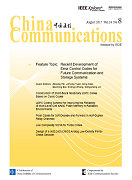NETWORKS & SECURITY
Lizhen Liu, Junjun Cui, Wei Song, Hanshi Wang
2017, 14(8): 137-148.
Collaborative filtering, as one of the most popular techniques, plays an important role in recommendation systems. However, when the user-item rating matrix is sparse, its performance will be degenerate. Recently, domain-specific recommendation approaches have been developed to address this problem. The basic idea is to partition the users and items into overlapping domains, and then perform recommendation in each domain independently. Here, a domain means a group of users having similar preference to a group of products. However, these domain-specific methods consisting of two sequential steps ignore the mutual benefit of domain segmentation and recommendation. Hence, a unified framework is presented to simultaneously realize recommendation and make use of the domain information underlying the rating matrix in this paper. Based on matrix factorization, the proposed model learns both user preferences of multiple domains and preference selection vectors to select relevant features for each group of products. Besides, local context information is utilized from the user-item rating matrix to enhance the new framework. Experimental results on two widely used datasets, e.g., Ciao and Epinions, demonstrate the effectiveness of our proposed model.
